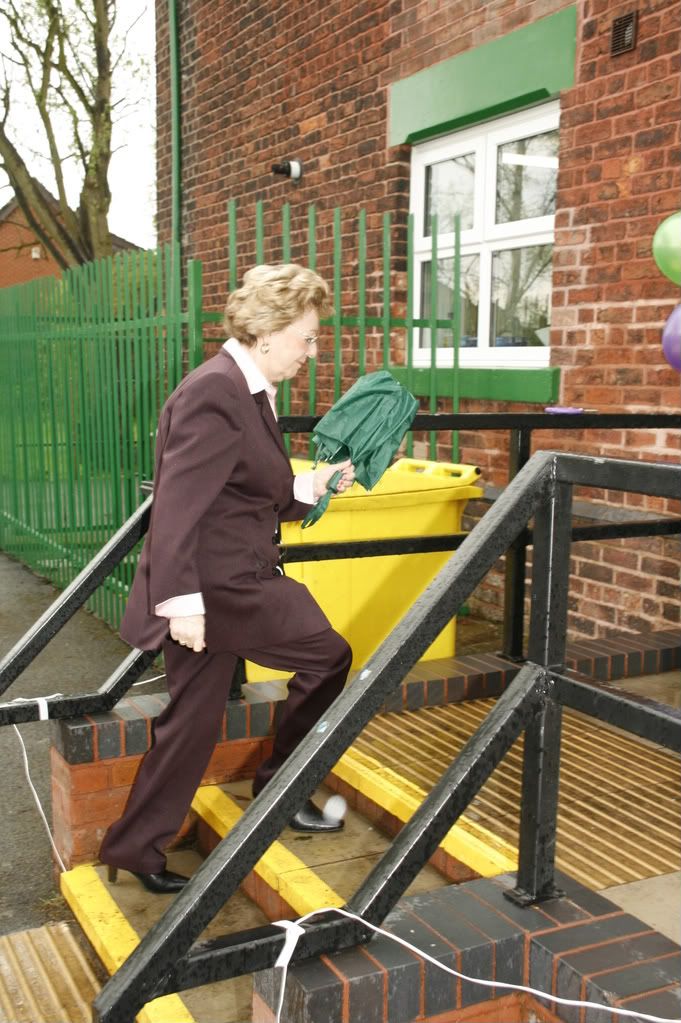Posted: Sun Jun 29, 2008 11:20 pm
Outside a local scout and guide group building that im on the commitee for, has a disabled ramp and steps to the main entrance.
We received a grant about two to three years back and had the work carried out. The ramp is flagged and there is a row of 2x2's rpc flags, then a set of buff cycleway paving just before the steps begin.
The problem is that as the tactile paving flags have been laid just a couple of mm below existing flags and with their being grooves in the cycle way paving it is holding water as it has nowhere to drain. Also in winter it freezes up and outside a maine entrance its dangerous.
The solution- i was considering either lifting the paving that couple of mm and relaying. so that it runs off to the gradient of rest of paving. Or to purchase buff blister paving, but i am unsure if the cycleway type has been used for a reason compared to the blister.
Heres a picture to see what i mean.
Thanks
Liam Booth
Ps the image is taken from our official opening event opened by councillor of boothstown.

We received a grant about two to three years back and had the work carried out. The ramp is flagged and there is a row of 2x2's rpc flags, then a set of buff cycleway paving just before the steps begin.
The problem is that as the tactile paving flags have been laid just a couple of mm below existing flags and with their being grooves in the cycle way paving it is holding water as it has nowhere to drain. Also in winter it freezes up and outside a maine entrance its dangerous.
The solution- i was considering either lifting the paving that couple of mm and relaying. so that it runs off to the gradient of rest of paving. Or to purchase buff blister paving, but i am unsure if the cycleway type has been used for a reason compared to the blister.
Heres a picture to see what i mean.
Thanks
Liam Booth
Ps the image is taken from our official opening event opened by councillor of boothstown.
